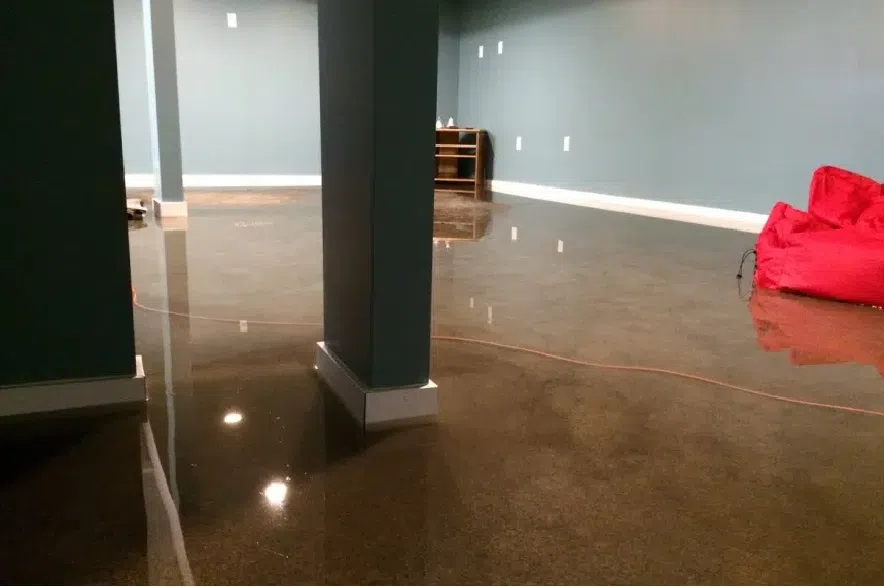The snow melting from the recent warm-up in temperatures could cause trouble for your home.
Steve Bauer with AAA Solid Foundation Repair in Regina expects a flood of calls about basement seepage this week.
He said that all the snow we got this year and the several freeze-thaw cycles have led to ice build-up around some homes.
On the Greg Morgan Morning Show, he shared tips on how to save your house foundation before it’s too late during the spring melt.
Listen to Steve Bauer speak about how to protect your home:
https://iono.fm/e/1530915
The following transcript has been edited for length and clarity.
GREG MORGAN: Are you getting busier with the weather warming up and the snow starting to melt?
STEVE BAUER: We’re going to get a lot of phone calls this week.
What are they calling about the most?
BAUER: People are starting to get some seepage in their basement, or they’re concerned about getting seepage in their basement. We’ve had so much snow and it’s melted and frozen and melted and frozen, so we get a lot of ice build-up around the houses. That’s kind of hard to get rid of that. What I tell people is to do the best they can to shovel around the foundation. Get rid of that snow that’s going to be melting so it doesn’t accumulate. Number two — throughout shovelling over the winter — sometimes eavestroughs get misplaced, kicked over, or moved out, so the best thing to do would be to make sure your eavestroughs are functioning properly.
How far away from the home should people move their snow?
BAUER: I like to see it at least three feet. That gives you some leeway so if it does snow, you’re not going to have these huge piles close to the house. At least three feet, that way you can walk around and check everything out, make sure no cracks or anything is happening.
Is it normal to see a little wet patch on basement cement in a home that has been built in the last 15 to 20 years, or is that a problem?
BAUER: It is normal if the grading is starting to erode. It’s not a huge problem if you’re getting small accumulations of water. It’s not a deal breaker in terms of busting your wallet. What you can do is make sure that you have a positive grade. You can go around your house and do some grading. A positive grade means that when water comes down, it sheds away from your house instead of coming in towards your house. That goes a long way for bang for your buck by doing some grading and that solves a lot of the problems you drop some grading.
Grading is key, but you’ve probably seen a lot where neighbours aren’t necessarily working with their neighbours on that one, have you?
BAUER: There are a lot of foundations that have zero log clearance in the city, meaning that your neighbour controls your side of the house. So you have to have a chat with your neighbour so they can move the snow away and not pile it up against your house. Keep that foundation clear.
If they’re not capable of doing that then maybe you can make an agreement with them so you can go onto the property and move the snow and maybe do some grading. It’s a good idea to do that and have that kind of rapport with your neighbour if you have zero walk clearance at home.
Is having items leaning up against the house a problem?
BAUER: That’s another thing that happens is, I go to a lot of houses, especially late in the fall. I see they have a canoe up against the house, maybe some plywood or composting bins, that kind of thing. What happens when the snow comes? We got a lot of snow this year, so you have two feet of snow that’s starting to melt so, your canoe and your compost and everything freezes beside the house and you can’t shovel it. It becomes a snow trap.
Is fall the time to be proactive?
BAUER: 100 per cent, it’s a year-round thing. Be proactive in the fall and then throughout the winter. Try to get your snow away from the house. Then, throughout the spring, do your grading. Make sure your eavestroughs are good and they’re clean and that you don’t have the pine cones plugging them up.
What’s the first thing we should look for to be concerned about in our basement?
BAUER: I like to do a walk around my property — and I encourage this for other people — just around the outside of the house and see if there are any cracks. Look around the windows, particularly about a foot in from the end. That’s what we call stress cracks, where one wall holds in the other wall so that it starts to crack on the inside.
Look for any seepage or any kind of movement in your drywall. With your windows not closing properly or the window is slanting, there’s a crack and slant. In the middle of the drywall, there might be a crack, meaning that the wall starting to deflect a lot of times. Your ceiling tile might start teepee-ing, which means it turns into a triangle because it’s pushing in from the top.
Other indications you might need your tile posts adjusted or cracks on the inside of your home and possibly your doors don’t close, bathroom and bedroom doors and things like that. There are a few indicators to look at.
Home maintenance is year-round, you said even in the summertime we should water our grade occasionally?
BAUER: If we’re going to have a really warm year like last year, those weeks where it’s 30 C for three weeks, it’s a good thing to water your foundation and keep it like your garden because it’s going to dry out. If it dries out excessively, then it’s going to drop and that’s quite expensive to repair. The other thing is if you have lots of trees around your foundation, it’s a good thing to cut them back because they do plug your eavestroughs and they also suck a lot of water out the ground.











